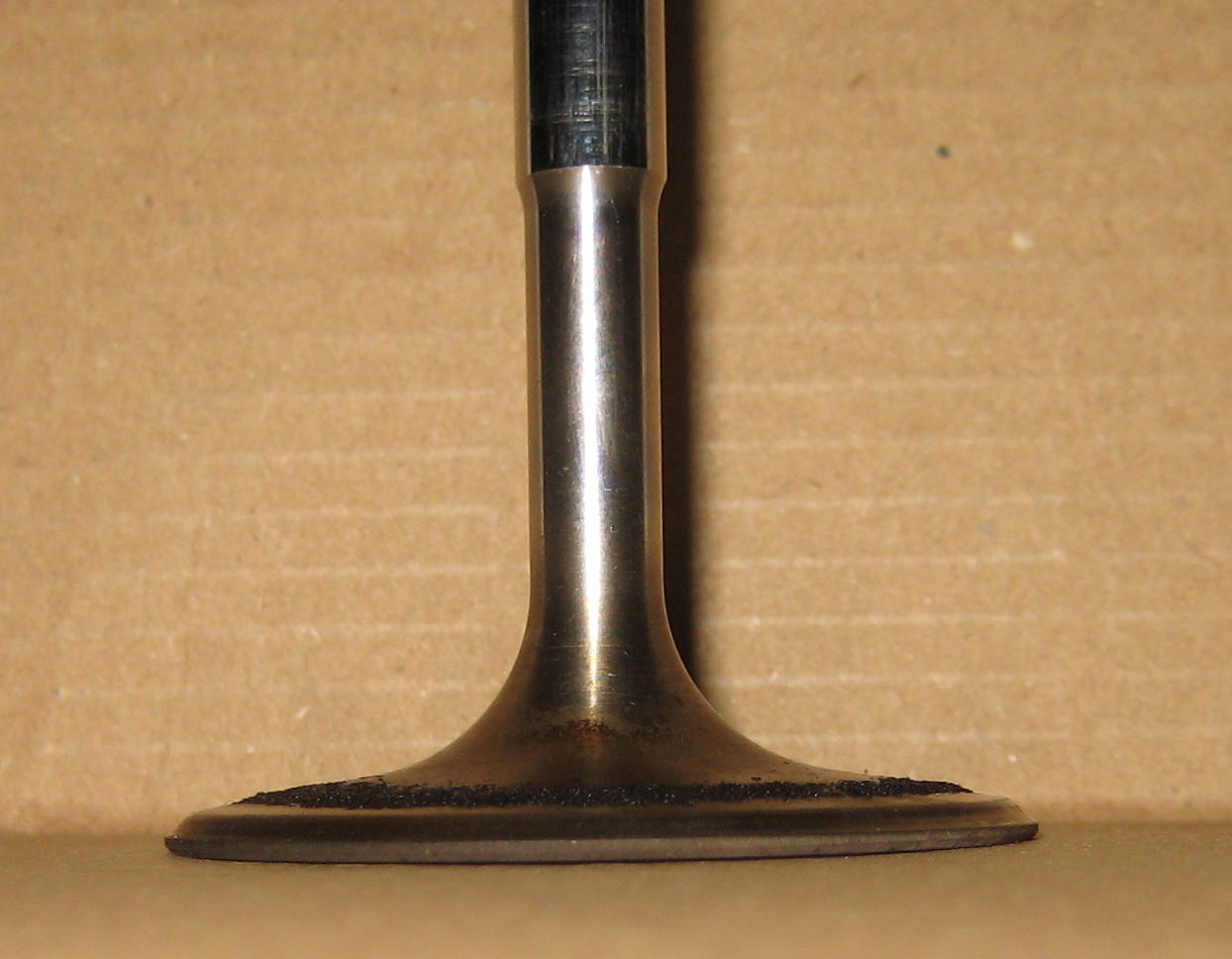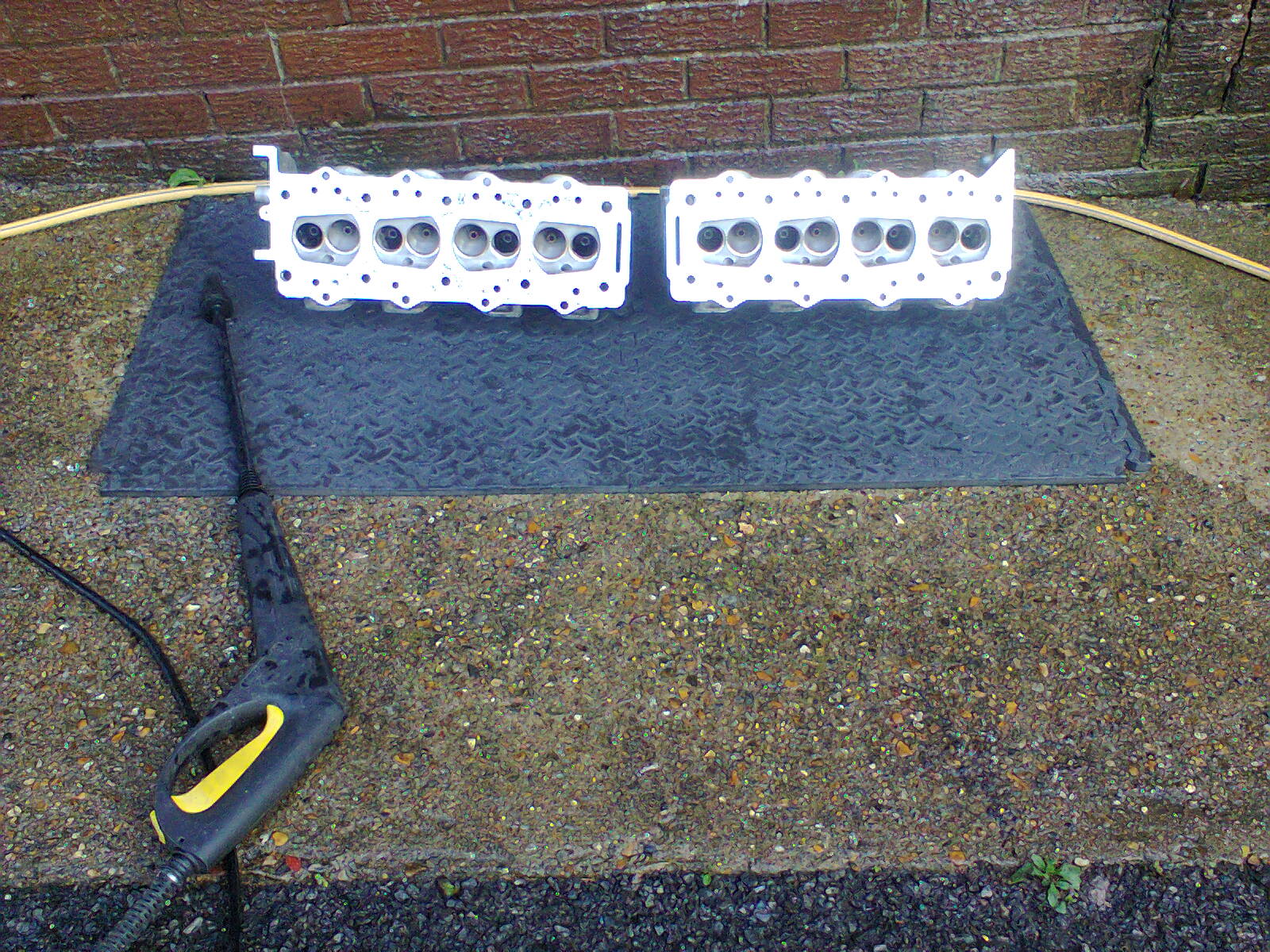Valve Guide Loose in Head - Options?
Discussion
Mignon said:
The marks on that lifter bucket look like it wasn't rotating properly. Cam lobes should be offset from the lifter centre by a few mm to create rotation. Maybe some design engineer messed this up.
They definitely do rotate, you should see the ones where the shims have never been checked/changed - they are very literally dished all the way round to a depth of a mil or twoFortunately mine was never that bad
GreenV8S said:
If you ever wondered what happens if you try to produce a high performance engine with about a thousandth of the expertise, research and development that mainstream manufacturers put in to achieve modern mass production reliability levels, there is no need to wonder any more because TVR have found the answer for us: it's the AJP.
There are only two design flaws that I am aware of with the AJP8- Cranks that snap - this only affected early 4.2 engines, journal size was increased on later engines
- Aux drive shafts failures (driving water/oil/PS pumps) - again the shaft was uprated on later engines (possibly not mine though)
PeterBurgess said:
I don't think anyone is trying to criticise the engine as such. It is a high rev engine which will wear fast. It is also an engine that was not years in the design and operation so inherent problems have not been addressed and may not have been known about when production ceased. My main love is B series BL engines, they were modified to take into account problems which showed up over the extremely long evolution time of the engine.
It is worth bearing in mind that the AJP8 is possibly the lightest v8 engine of its capacity ever built at just 121kg (flat plane crank helps)Not only that, but it is tiny!
Apparently it fits in a 2 foot square cube...
PeterBurgess said:
It may well be aftermarket valves are shorter to take into account valve seats going up in the head or severe wear because of seat material? If you asked the suppliers do you think they would tell you why the valves are shorter?
You may well be rightThe length of the only used valve I've checked is exactly 120.50mm
I remember seeing the length of a new intake specified as 120mm
I am not sure I'll get anywhere by asking questions, but you never know
Sardonicus said:
The result = zero or close to nowt valve clearance on a cold engine thus the buckets cant rotate  once the cam lobe digs into the bucket through poor lubrication and no rotation making a trough impression then it definitely wont rotate further adding to the problem
once the cam lobe digs into the bucket through poor lubrication and no rotation making a trough impression then it definitely wont rotate further adding to the problem  easily avoided in this case if correct adjustment schedules were adhered to
easily avoided in this case if correct adjustment schedules were adhered to
On the AJP8 the wear is more likely to occur when the engine is up to temp because the gaps close up as the engine reaches operating temp once the cam lobe digs into the bucket through poor lubrication and no rotation making a trough impression then it definitely wont rotate further adding to the problem
once the cam lobe digs into the bucket through poor lubrication and no rotation making a trough impression then it definitely wont rotate further adding to the problem  easily avoided in this case if correct adjustment schedules were adhered to
easily avoided in this case if correct adjustment schedules were adhered to Initially a cold engine will sound very tappety indeed, once at operating temp there should be very little valve train noise
If a cold engine has little valve train noise it is a good sign of deferred maintenance
Sardonicus said:
stevieturbo said:
Just stick an LS in it...lol
 An engine with hard to source spares like the AJP would make me nervous
An engine with hard to source spares like the AJP would make me nervous  cyl heads for example or knowing you have very little options for spare parts that can be priced according to availability and not in a good way either
cyl heads for example or knowing you have very little options for spare parts that can be priced according to availability and not in a good way either 
Used engines are available for about £3.5k
It's almost a drop in replacement, you can use the same ECU, probably get away with minor loom adaptation, but there would be a couple of engine/gbox chassis mount changes (the engine is much longer), and shorter propshaft
Actual cost of an LS conversion would be at least 4x or 5x as much
Failing that with a lot more fabrication you could just pretend it's Chimaera rather than a Cerbera and put in an RV8, there is at least one example in existence
I'm not claiming I'd keep it without the AJP8 though
The failed guide / head is in my opinion an outlier
That cylinder was horribly compromised by a faulty injector and an oblivious owner
The damage I did by continuing to drive it on track - redlining routinely, cannot be blamed on the design or the manufacturer
If there were similar damage in other cylinders you would have a valid point
I will certainly document the head with as many photos as I can take, but measuring anything awkward is likely to be outside my skillset
That cylinder was horribly compromised by a faulty injector and an oblivious owner
The damage I did by continuing to drive it on track - redlining routinely, cannot be blamed on the design or the manufacturer
If there were similar damage in other cylinders you would have a valid point
I will certainly document the head with as many photos as I can take, but measuring anything awkward is likely to be outside my skillset
Thank you both once again for continuing to contribute your time and experience - it is very much appreciated
Sorry if I appear to have been overly defensive of TVR's engine, but they get so much criticism that I really wanted to point out that my negligence is largely responsible for the damage
Here is more evidence from about a year or 4000 miles ago that I chose to ignore
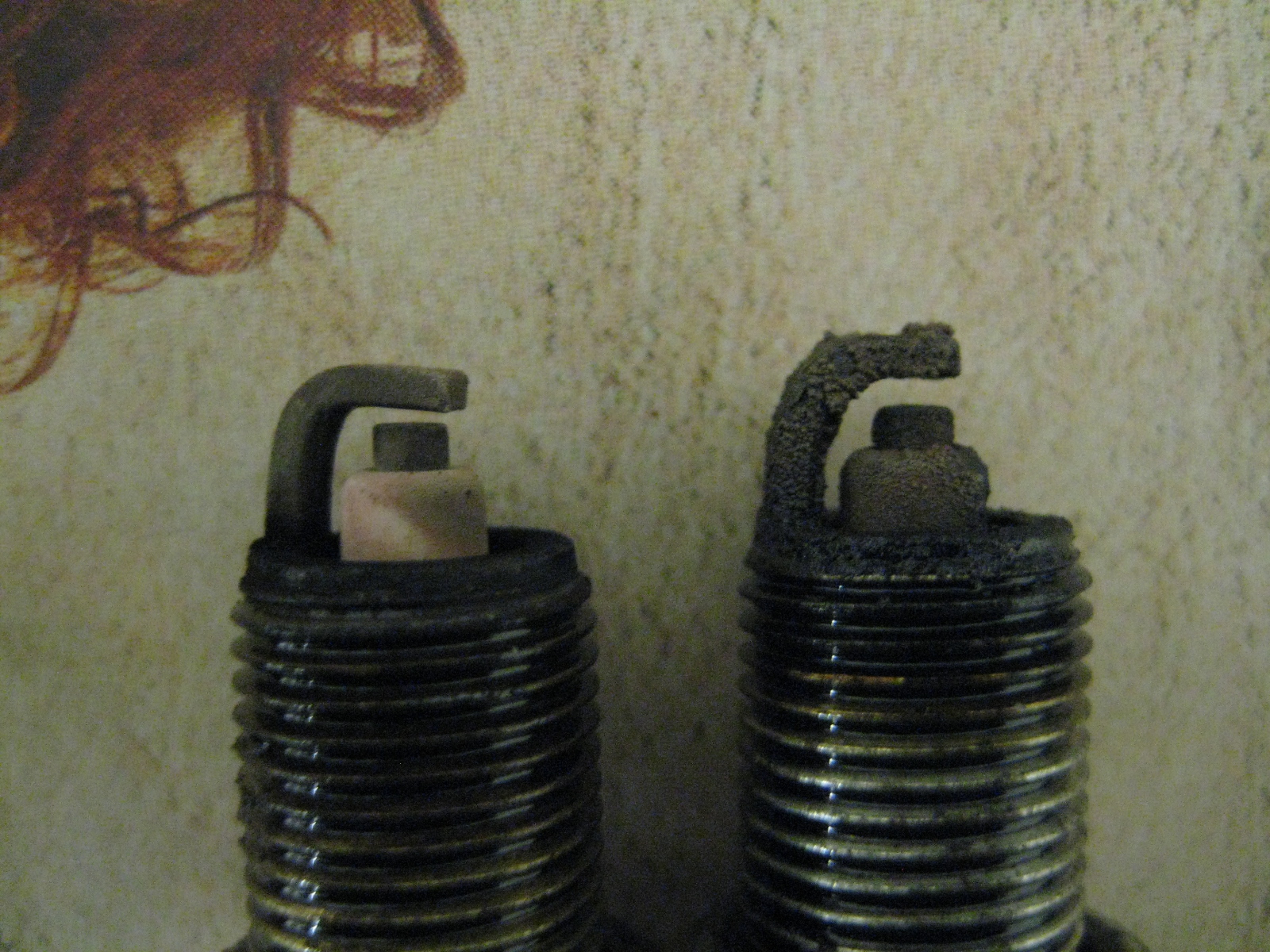
The right hand plug is from the damaged cylinder
Sorry if I appear to have been overly defensive of TVR's engine, but they get so much criticism that I really wanted to point out that my negligence is largely responsible for the damage
Here is more evidence from about a year or 4000 miles ago that I chose to ignore

The right hand plug is from the damaged cylinder
I measured several of the intake valves
They are all 120.50mm, if they had stretched I would expect them all to be slightly different
But they weren't, not to within the accuracy that I can measure with my Verniers
These show that the flat face of the intake valve does distort (they are definitely not dished by design)
I simply tried cleaning the face with some wet & dry on a flat surface
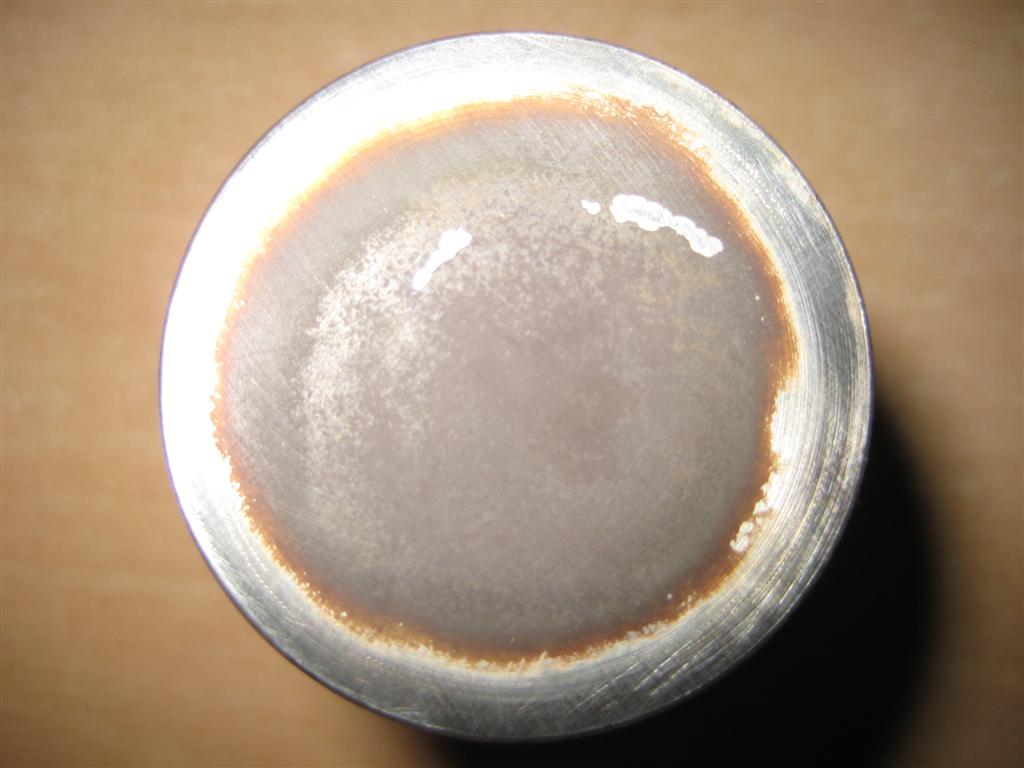
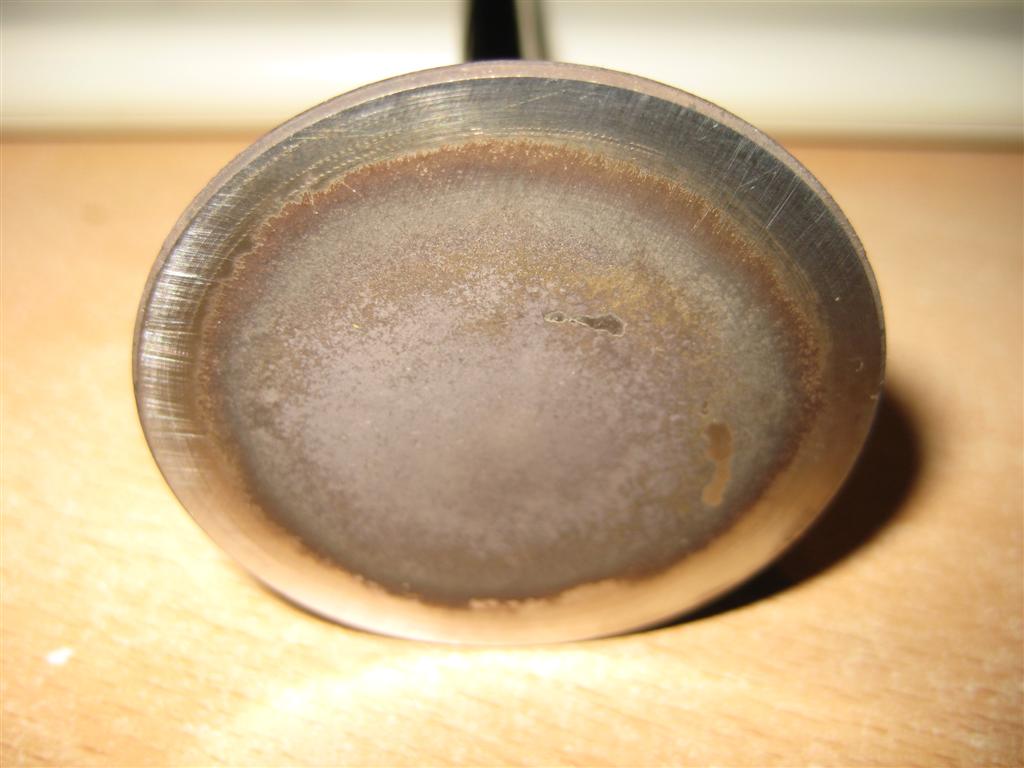
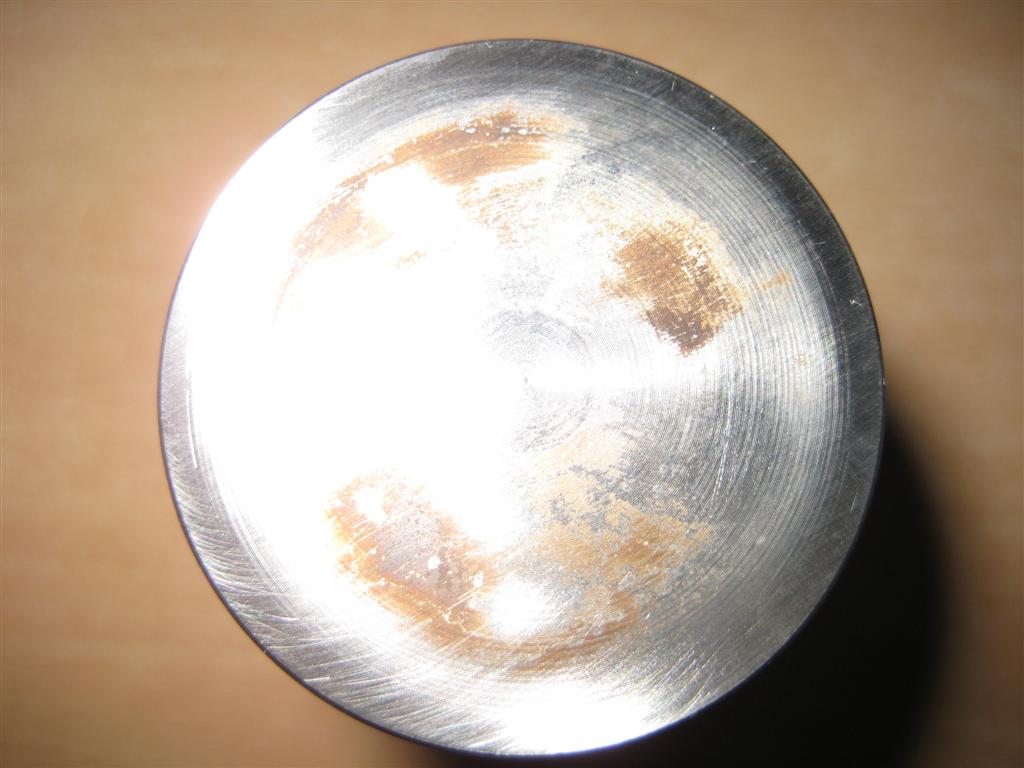
These are the pair of valves from the damaged cylinder
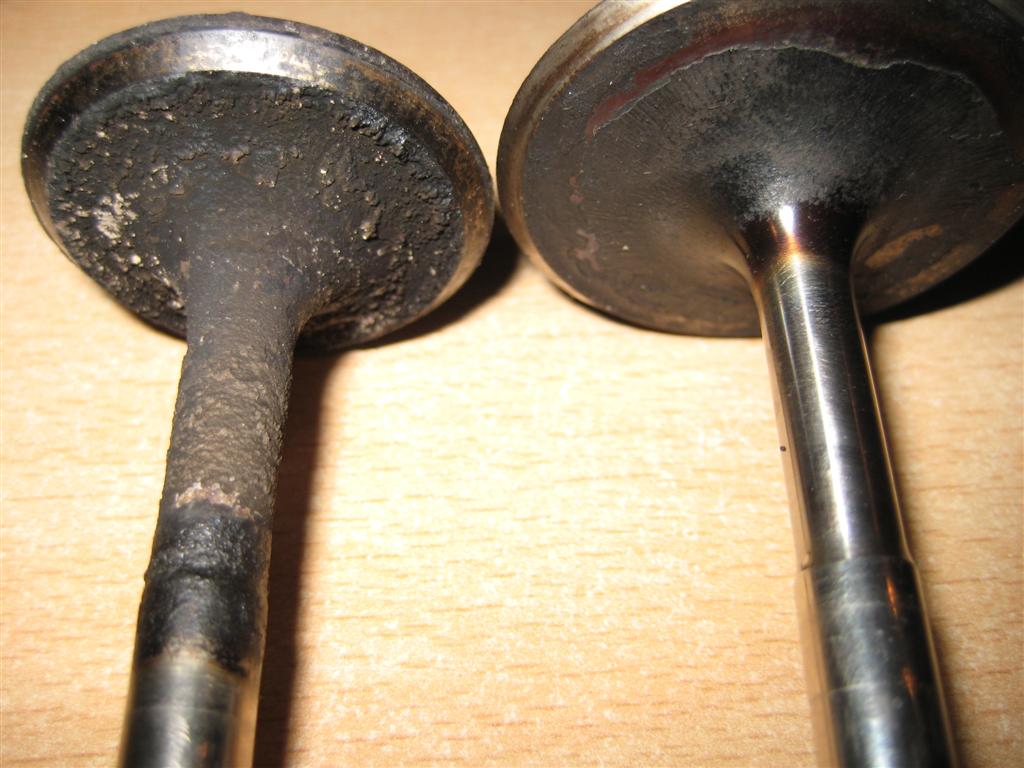
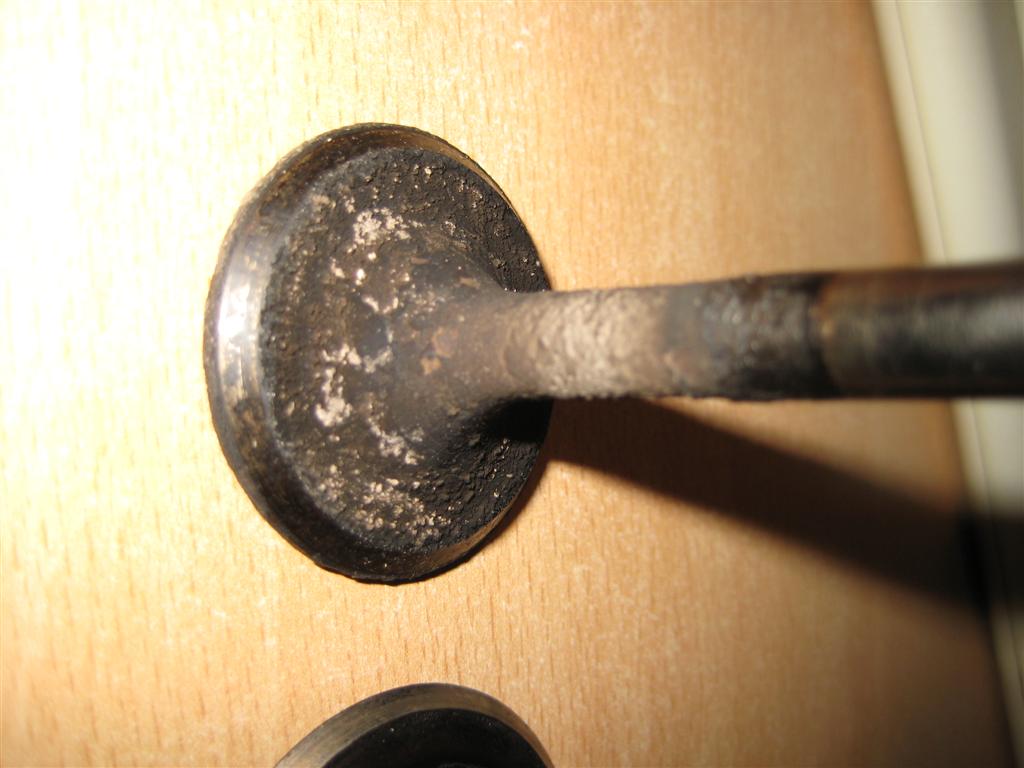
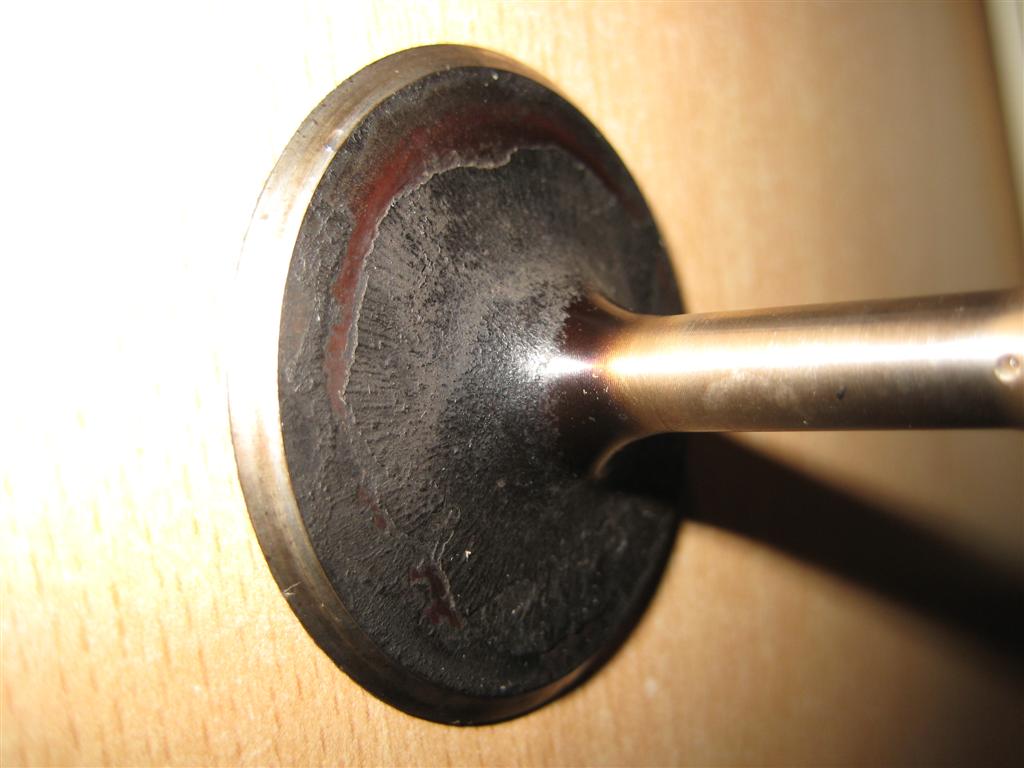
They are all 120.50mm, if they had stretched I would expect them all to be slightly different
But they weren't, not to within the accuracy that I can measure with my Verniers
These show that the flat face of the intake valve does distort (they are definitely not dished by design)
I simply tried cleaning the face with some wet & dry on a flat surface



These are the pair of valves from the damaged cylinder



Edited by ukkid35 on Friday 16th March 18:49
Hopefully these photos will help with the timeline
First time immediately after purchase, no sign of damage (other than corrosion)
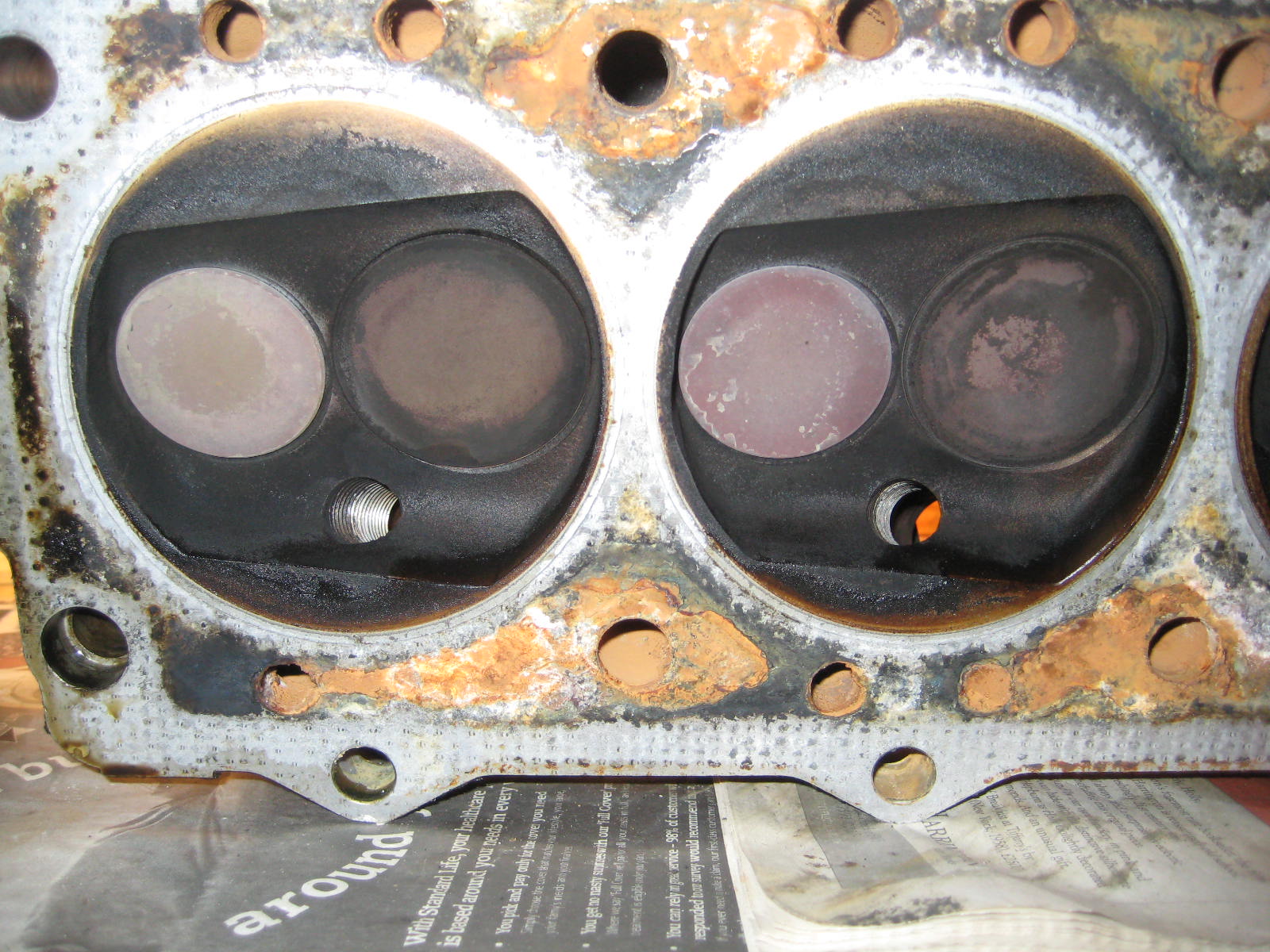
Sadly I only have a photo of the other head after the head skim
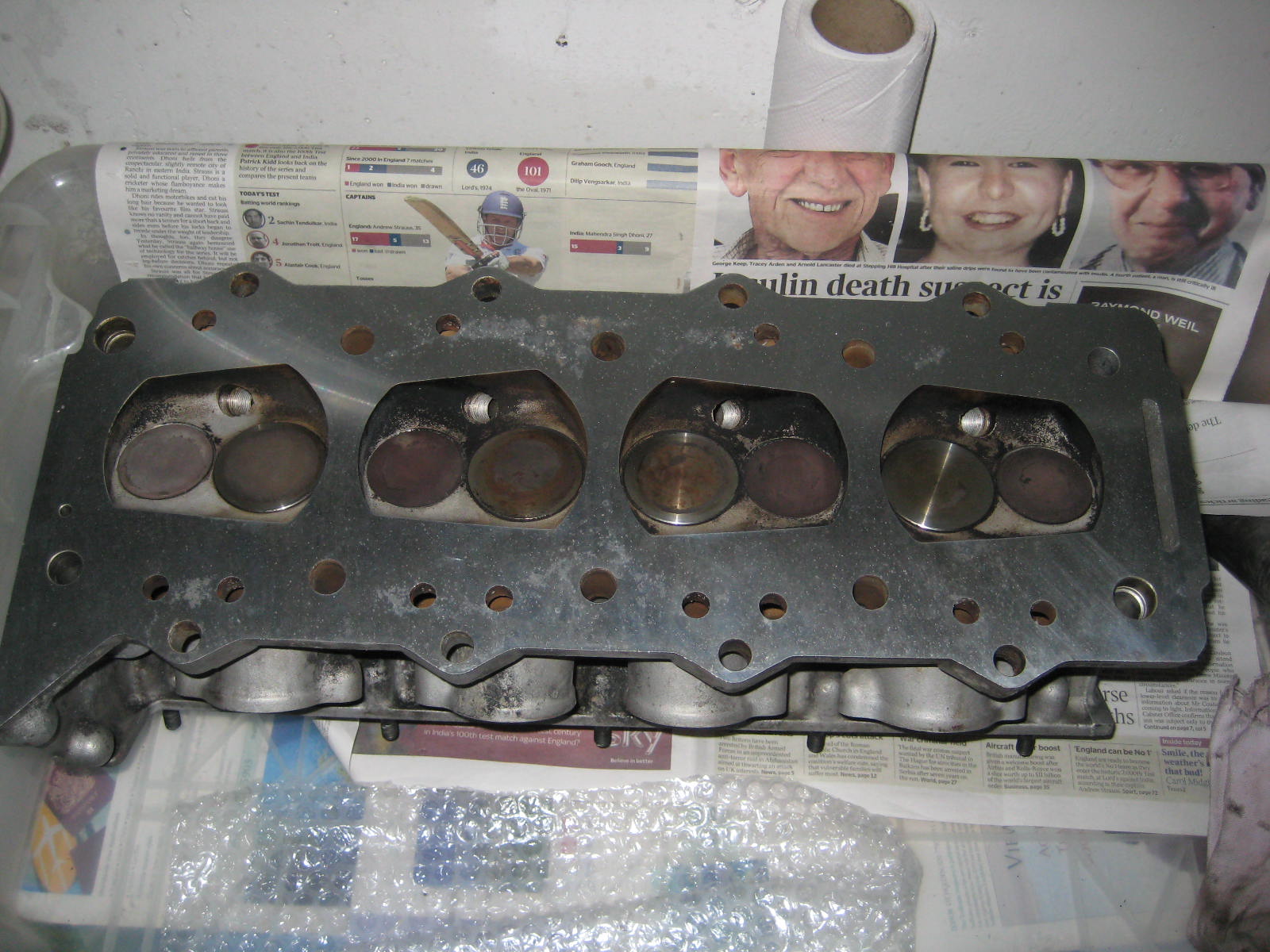
Second time after about 15k miles, obvious signs of pitting in the combustion chamber
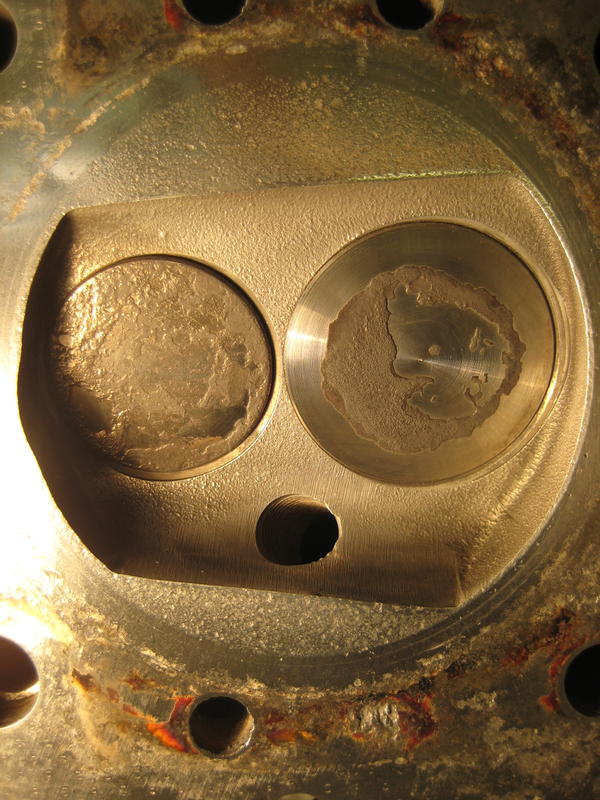
After the head skim
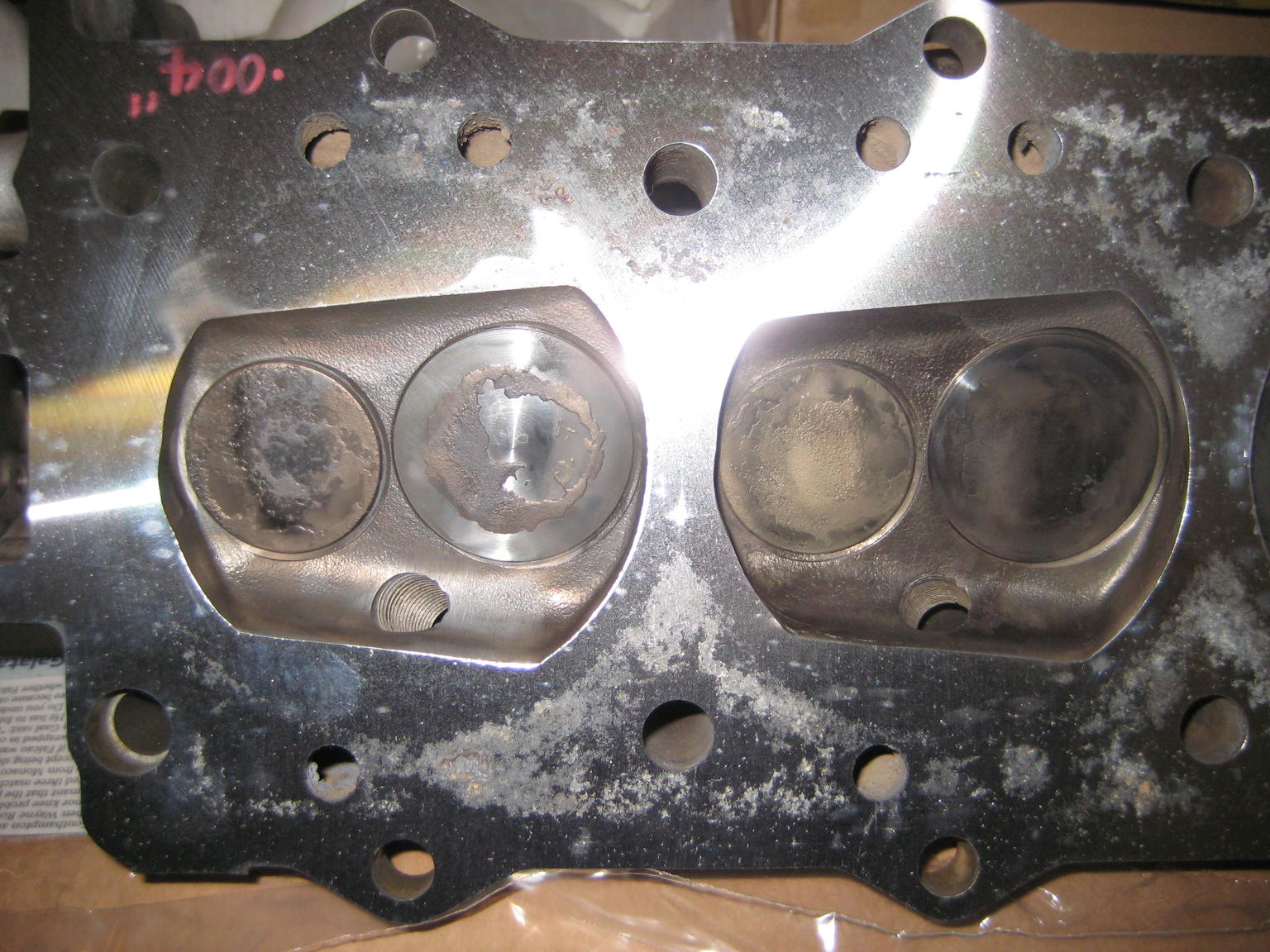
Close up of area showing that some pitting remains after the head skim
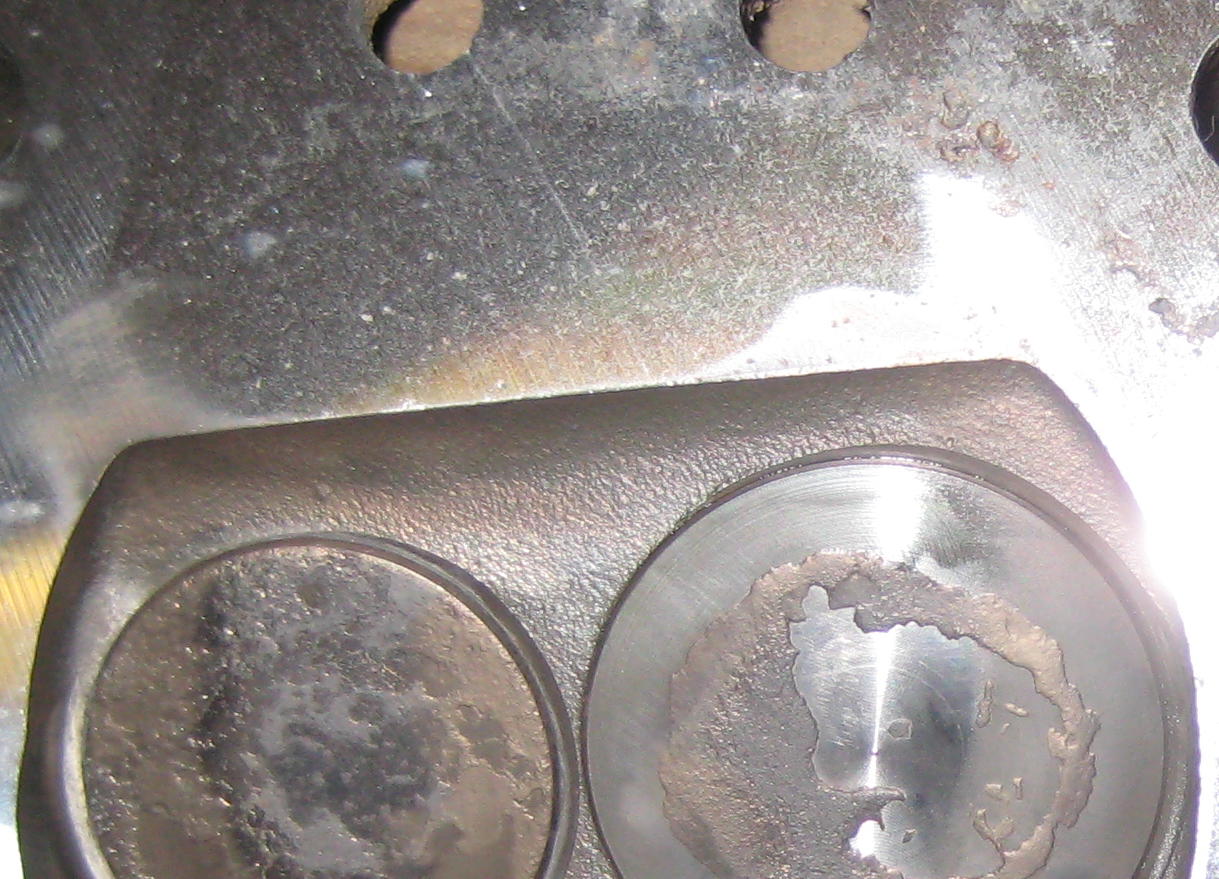
Faulty injector now discovered and replaced
Third time after another 10k or so, difficult to say whether there is additional pitting
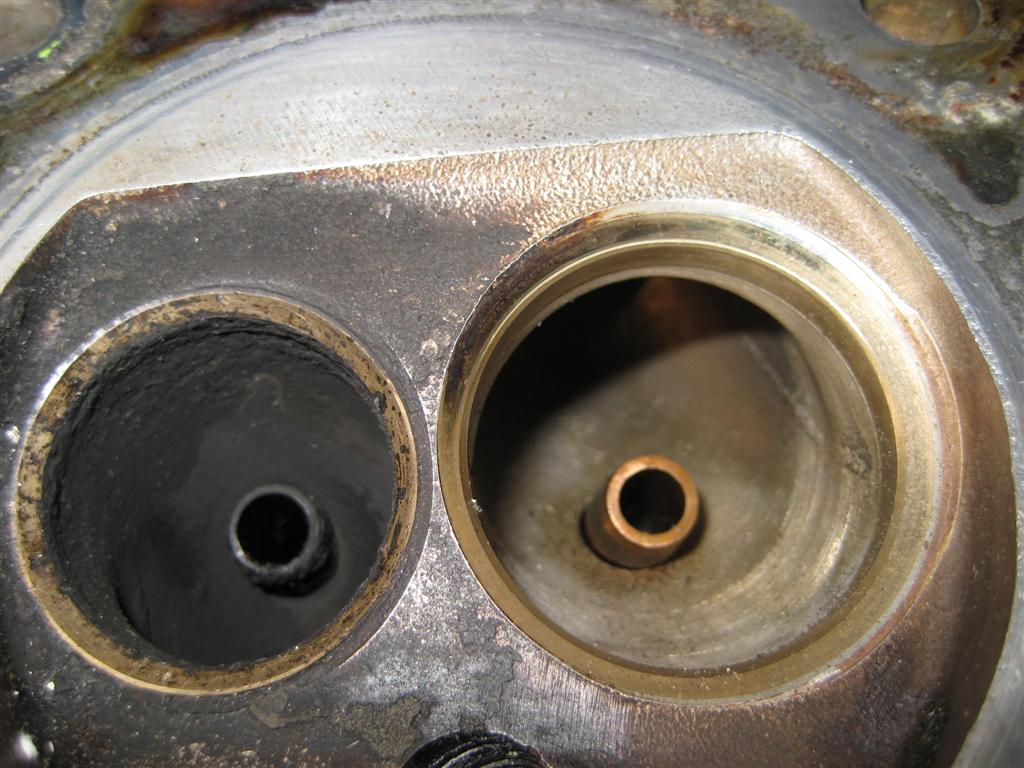
First time immediately after purchase, no sign of damage (other than corrosion)

Sadly I only have a photo of the other head after the head skim

Second time after about 15k miles, obvious signs of pitting in the combustion chamber

After the head skim

Close up of area showing that some pitting remains after the head skim

Faulty injector now discovered and replaced
Third time after another 10k or so, difficult to say whether there is additional pitting

Edited by ukkid35 on Friday 16th March 20:13
AW111 said:
Given the amount of clearance around the guide, there must have been a fair amount of oil dribbling past it.
OP, did it show any smoke at idle?
No smoke at idle or on under engine brakingOP, did it show any smoke at idle?
The engine does use oil when on track, no so much on road, I presumed this was due to blow by
There's no valve in the crankcase ventilation, and this links to the airbox directly next to the damaged cylinders air intake
PeterBurgess said:
Does anyone have any record for race use AJP8 engines of hours between builds? What sort of mileage do owners get with 'normal' road use?
Peter
I don't have any figures, but the AJP8 was used extensively in dry sump form as the engine used in the Tuscan Challenge race series from about 1990. The Cerb was introduced in 1996 with a wet sump versionPeter
I know of a couple of cars that have covered about 100k without any serious engine work
Mine has managed about 60k so far about half of that in my hands
I think the fuel cut is at 7700, and the warning buzzer comes on at about 7200, which is also roughly peak power
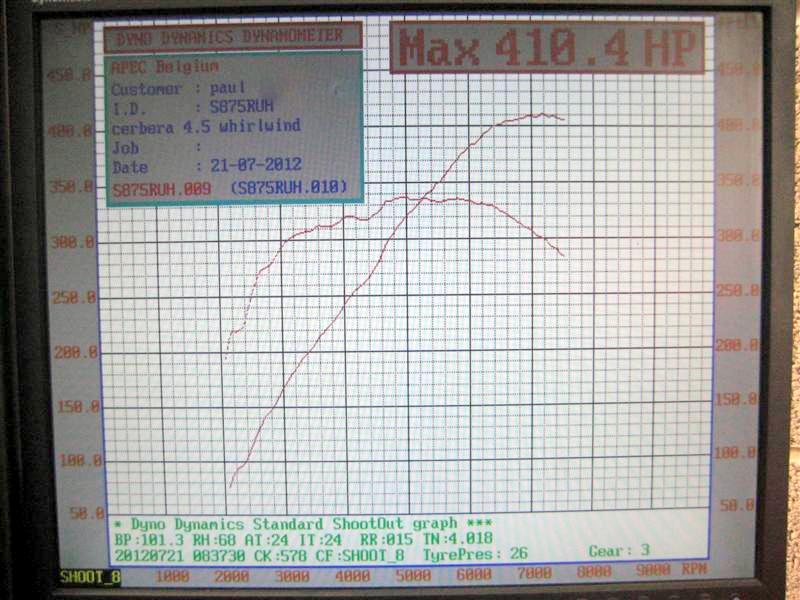
I really would find that very difficult to say
Perhaps 20 hours hard track use per year?
Plus a fair amount of driving on road
By the way, is it standard practice to shim valve spring seats to equalise spring force?
Certainly looks quite awkward to do, it will be interesting to see what shims come off when I get the heads back
Perhaps 20 hours hard track use per year?
Plus a fair amount of driving on road
By the way, is it standard practice to shim valve spring seats to equalise spring force?
Certainly looks quite awkward to do, it will be interesting to see what shims come off when I get the heads back
Posted yesterday in Cerbera forum
Note section on loose valve guides
Note section on loose valve guides
Byker28i said:
New large main bearing crank with associated machining etc, aux shaft upgrade, converted the front crankshaft oil seal housing to the later type as the old pulley adaptor had fretted on the crank nose as the bolt had been loose with the washer missing.
The cylinder heads caused issues as the casting was oversize and oval for 2 of the valve guides, it's sugegsted these must have been loose for most of the engines life. Two of the guides fell out when the engine was dismantled.
Then it's new everything else, camshafts, valves, everything uprated to the latest spec etc.
However it's the same price I paid for the car 11 years ago...
The cylinder heads caused issues as the casting was oversize and oval for 2 of the valve guides, it's sugegsted these must have been loose for most of the engines life. Two of the guides fell out when the engine was dismantled.
Then it's new everything else, camshafts, valves, everything uprated to the latest spec etc.
However it's the same price I paid for the car 11 years ago...
My machinist requested a pair of new valves in order to check guide wear
He condemned the original valves immediately
He advised that the exhaust guides needed to be replaced, but that intakes were fine (except for the loose guide)
I had the new guides shipped directly to the machine shop
Despite appearing to be Bronze on the parts site, what was delivered was Cast Iron


So I now have Bronze intake guides and Cast Iron exhaust guides
I presume Bronze would have been better because of the exhaust valve cooling requirements
However 60k miles seems quite low mileage to require new guides so perhaps harder wearing iron is not a disaster
As for the loose guide, my machinist fitted the exhaust guides first, and did a test fit with the intake and reported that it went in perfectly first time
He said the old guide appeared to be undersized, although I didn't get to see the old guides myself
The valve seats have all been CNC cut, and I have been advised to lap the valves using fine paste only
What I have read suggests that the lapping should be done in about ten seconds each, or risk creating a concave contact area
I wonder what chance these Frankenstein heads have of lasting another 60k
Any thoughts?
He condemned the original valves immediately
He advised that the exhaust guides needed to be replaced, but that intakes were fine (except for the loose guide)
I had the new guides shipped directly to the machine shop
Despite appearing to be Bronze on the parts site, what was delivered was Cast Iron


So I now have Bronze intake guides and Cast Iron exhaust guides
I presume Bronze would have been better because of the exhaust valve cooling requirements
However 60k miles seems quite low mileage to require new guides so perhaps harder wearing iron is not a disaster
As for the loose guide, my machinist fitted the exhaust guides first, and did a test fit with the intake and reported that it went in perfectly first time
He said the old guide appeared to be undersized, although I didn't get to see the old guides myself
The valve seats have all been CNC cut, and I have been advised to lap the valves using fine paste only
What I have read suggests that the lapping should be done in about ten seconds each, or risk creating a concave contact area
I wonder what chance these Frankenstein heads have of lasting another 60k
Any thoughts?
Edited by ukkid35 on Sunday 22 July 09:51
It's my understanding that the valves are chrome plated, but that is not part of the description on the TVR Parts website
"Product Description: OE exhaust valve for the AJP V8 engine. This is a high quality exhaust valve for the AJP V8 engine from the OE UK supplier."
However, all parts are from TVR, so you would hope that they would not be incompatible
Is there any easy way to check whether the valves are plated?
When I finally install the valves, is there anything I should use to lubricate the guides? Assembly Lube?
"Product Description: OE exhaust valve for the AJP V8 engine. This is a high quality exhaust valve for the AJP V8 engine from the OE UK supplier."
However, all parts are from TVR, so you would hope that they would not be incompatible
Is there any easy way to check whether the valves are plated?
When I finally install the valves, is there anything I should use to lubricate the guides? Assembly Lube?
Gassing Station | Engines & Drivetrain | Top of Page | What's New | My Stuff




